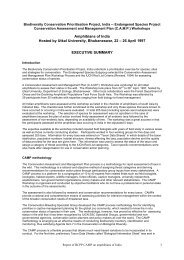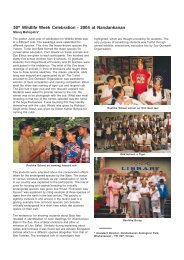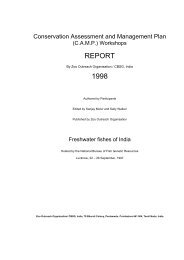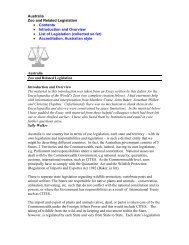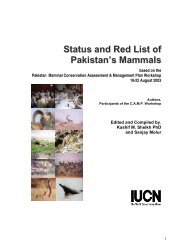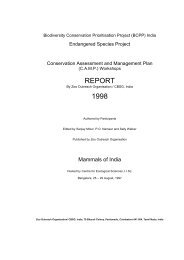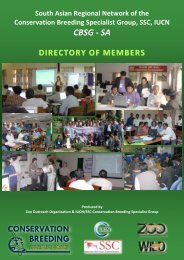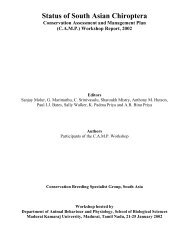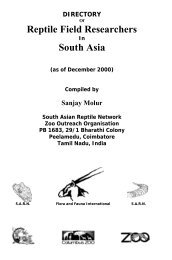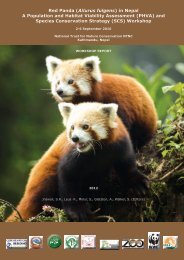Bugs R all March 2011 FINAL daniel - Zoo Outreach Organisation
Bugs R all March 2011 FINAL daniel - Zoo Outreach Organisation
Bugs R all March 2011 FINAL daniel - Zoo Outreach Organisation
- No tags were found...
You also want an ePaper? Increase the reach of your titles
YUMPU automatically turns print PDFs into web optimized ePapers that Google loves.
Over the en,re period of their ac,ve life, buIerflies en-gage in a spectrum of plant feeding rela,onship which are oRen very complex involving co evolu,on and obligate mutualism. Such interac,ons can be a major factor in genera,ng paIerns of diversity in both partners (Enrlich and Raven 1965, Gilbert 1975a,b). BuIerflies are oRen dependent on specific host plants and have a complex life cycle. They are vulnerable to the ac,vi,es of man, which disturbed their habitat. Pollard (1996) added that buIer-flies offer good opportuni,es for studies on popula,on and community ecology. Many species are strictly sea-sonal preferring only a par,cular set of habitats (Krishnameah Kunte 2000). Being good indicators of cli-ma,c condi,ons as well as seasonal and ecological changes, they can serve in the formula,ng strategies for conserva,on. It is hence encouraging that buIerflies are now being included in biodiversity studies and biodiversity conserva,on priori,za,on programmes (Gadgil 1996). The ability of most adult Lepidoptera to obtain and u,lize the carbohydrate in nectar, which can be converted to and stored as fats, becomes a major asset with the rise and spread of flowering plants. This study is intended to summarize the present state of knowledge in buIerfly plant interac,on and feeding habits and also the food sources of adult buIerflies. Study AreaThe present study was carried out in two different areas of Kochi, located between 9 0 58'N -‐ 76 0 14'E about 10km away from Ernakulam town (Fig 1). The selec,on is based on the type of vegeta,on (quarry land with shrubs and herbs boarded by t<strong>all</strong> trees) and difference in the ecological con-di,ons.Foraging behaviour of bu/erflies Manju V Subramanian 1 and K.N. Vijayakumari 21 Department of <strong>Zoo</strong>logy, Sacred Heart College, Thevara, Ernakulam, Kerala 68<strong>2011</strong> India2 Selec,on grade Lecturer, Department of <strong>Zoo</strong>logy, Maharaja’s College, Ernakulam, Kerala, IndiaEmail: 1 manjuvs@yahoo.comMaterials and MethodsUniden,fied buIerflies were collected and iden,fied by comparing with the collec,ons of Maharaja’s College and personal communica,ons with entomologists. Associated plant species were iden,fied with the help of Botanist. Basic books in Taxonomy of plants by Singh and Jain (1987) were referred for further details of plants. During the observa,on the flight of buIerfly in which flowers it took rest, number of visits, behaviours like res,ng posture, feeding, res,ng ,me, terrestrial behaviour were noted and tabulated. Observa,ons were made during day,me, morning (7–9 am) and aRernoon (12-‐3 pm) for a period of two months.Results and DiscussionStudies were carried out in two different locali,es of Kochi and about 21 species of buIerflies belonging to 8 different families were observed for their foraging behaviour and food habitat (Table 1). Almost <strong>all</strong> the buIerflies found on these sites were, visi,ng flowers for nectar except some. Basking in sun is of great significance among buIerflies. In order to fly, cold blooded animals like buIerflies must warm their flight muscles to sufficient temperature. For this buIerflies bask in the sun with open wings to keep the thoracic muscle warm for the next flight. They seldom select shaded areas and prefer larger nectar source bushes which serve as a res,ng and roos,ng area (Mi-chael 2004).BuIerflies acts as good pollina,ng agents. BuIerflies visit flowers for pollen and nectar. The study of buIerflies is important in rela,on to the biodiversity studies and as pollina,ng agents. Adult buIerflies feed mainly on fluids, especi<strong>all</strong>y flower nectar using a long thin, aIrac,ve pro-boscis. With this associa,on buIerflies obtain their food from plants. Availability of pollen, nectar, perfumes, pro-tec,ve as well as visual sites, and of sexual aIrac,on are among the principle aIractants responsible for establish-ing blossom pollinator rela,onship. The role of floral odours in pollina,on is well known and pollinators are known to be aIracted to specific chemical compounds produced by floral structure of flowers. Flower visita,on and consequent nectar use by the buIerflies are regu-lated by both behavioural and physical determinants. But-terfly proboscis is clearly adapted for reaching nectar at the base of long-‐tubed flowers and different species vary greatly in their proboscis length. Flower colour, especi<strong>all</strong>y in the ultra violet range, is a clue for many species. Flower posi,on on the plant is also important as many buIerflies will visit flowers facing upwards. Only a few will visit flow-ers that are directed towards the ground (Krishnamegh Kunte 2000). The present study revealed that buIerflies belonging to Nymphalidae, Pieridae, Papillionidae families prefer flowers of Compositae family mainly Tridax pro-cumbens, Mickenia cordata, Lantana camara and Agera-tum conyzoids. In nature the disc florets of compositate are protandros and hence when the s,gmas emerge through the staminal column they carry pollen grains along their lower surface. The nectar encircles the base of the style which possesses minute stomata with varying paIerns of distribu,on in different species, with the guard cells containing plenty of starch grains. The secre,on of <strong>Bugs</strong> R A! No. 17 <strong>March</strong> <strong>2011</strong> 2



